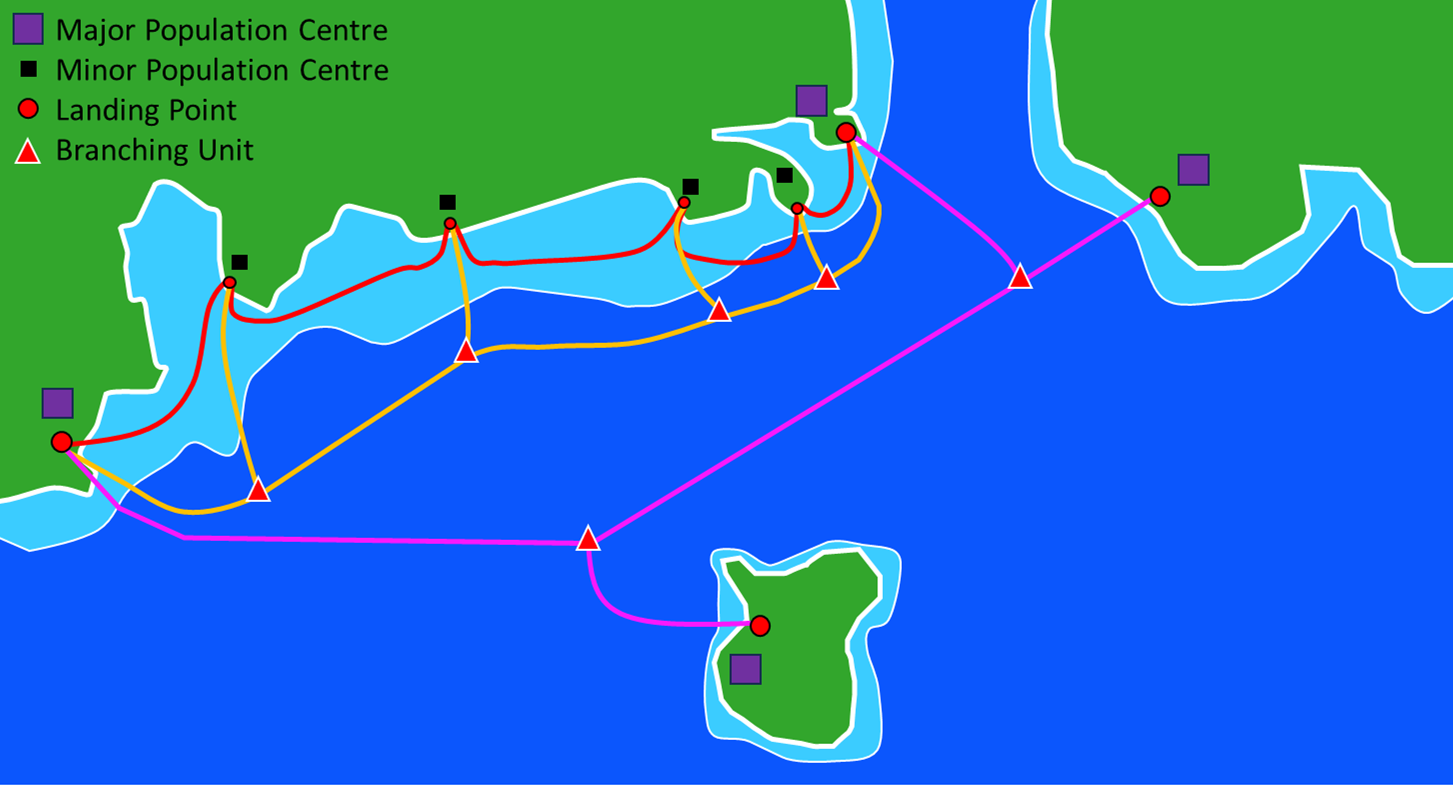Contact Us
Wednesday 12th February 2025 | Blog written by James Georgiev, OiQ Route Engineer

From the earliest stages of a new subsea cable project, understanding the pros and cons of utilising branching units or a festoon system is vital from a system design and cable security point of view. In many cases, the preference of one over the other will come down solely to the system design, but in instances where no preference is given, OceanIQ can determine if one or the other, or a combination of both will provide the most secure option for your subsea cable system.
Festoon systems are typically shallow water unrepeatered systems which connect multiple islands or population centres along a coastline via multiple individual cables, often as an alternative to terrestrial links. Due to unrepeatered cable length limitations, the maximum length of each festoon link is around 350km, but in practice most links are less than 250km in length due to attenuation over longer distances. No express fibres are present, so in a scenario where certain traffic is required between the start and end point of the system, this traffic must first travel to each landing point as no direct route is possible.
Branching units are ‘Y’ shaped pieces of subsea fibre equipment which are used to route fibre pairs within a cable to different landing points or offshore platforms, as well as allowing spurs to be left on the seabed as an option for future connectivity. They can be used as a direct alternative to a festoon by using a trunk and branch system or can be used in much larger cable projects which can be powered or unpowered, offering greater route diversity and reconfigurability of fibre pairs.
Aside from the greater configurability associated with branching units, they provide a number of additional benefits to the cable system, with the main benefit being increased system security and redundancy. Branching units are typically placed in deeper water areas which are less at risk from human activities such as fishing and anchoring. By having only one cable go towards the landing point, you can ensure that the optimal route to the landing point is engineered, which is particularly important in congested areas, along with having less total cable length within shallow water, fewer shore end operations and fewer cable crossings. If a fault on this section of the cable occurs, only traffic to the landing point will be affected, while other traffic on the system can be rerouted to ensure there is minimal downtime on the system.
The primary downsides of utilising branching units are the difficulties in engineering a suitable deployment location, along with the high up front cost of the branching unit. Finding a suitable deployment location requires careful consideration of the bathymetry, geology and other seabed features, along with route engineering considerations outlined in ICPC Recommendation No.2. The cost of the branching unit is often outweighed by the reduced cable length of the system, which also reduces the vessel time along with reducing the cable length within certain maritime boundaries that may introduce additional taxes and permitting requirements from governmental bodies.
Traditional festoon systems and more complex systems utilising branching units are both commonly seen in the subsea telecommunications industry today, and their use case comes down to the individual needs of each system.
The OceanIQ team has decades of experience working on both types of systems, so are well placed to ensure that any new subsea cable project gets off to the best start possible. Why not get in touch with the team today?
